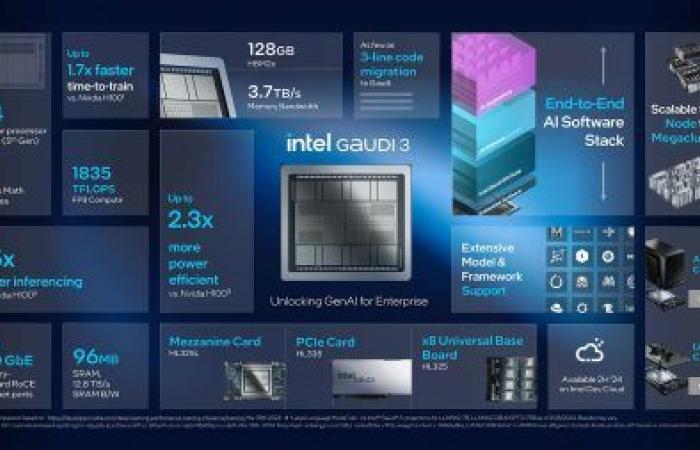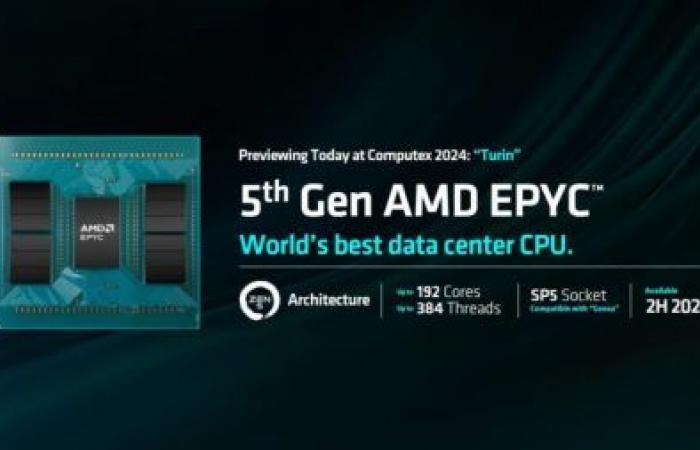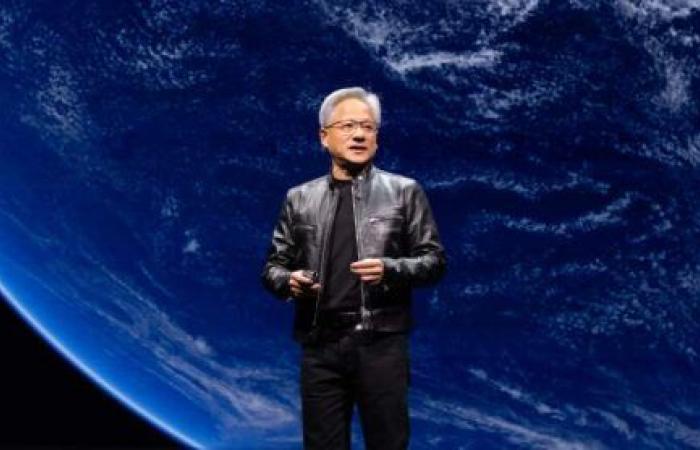Traditionally, the Computex show is more of a show for gaming PCs and ever more ultra-nomadic portable machines. But this year, pressure on AI needs has encouraged players to make some big announcements around CPUs and GPUs that will power servers and data centers in the future.
The Computex show, which was held last week, is not just an opportunity to preview the PCs at the end of the year. It is also an opportunity for processor manufacturers to make some announcements and not only in the world of “Copilot+ PC”. The race for AI obliges, Intel, AMD and NVidia had a lot to say about their offers for Datacenters.
Here’s what to remember from these announcements…
Intel begins delivering its Xeon 6 and Gaudi 3
2024 promises to be a pivotal year for Intel’s Xeons. The founder separates its range into two families and 4 series! In other words, Intel is trying to put a little ranking in its SKUs without necessarily trying to reduce their number. We’ll have to keep up, it’s not easy. Roughly speaking, the Xeon 6 range – engraved in Intel 3 technology – is made up of two families:
– THE ” Sierra Forrest », energy-efficient Xeon 6s and only built around “ E-Cores ”, therefore efficient hearts.
– THE ” Granite Rapids », Xeon 6 designed for performance, AI training and scientific computing, only equipped with “ P-Cores » therefore of “Performance” hearts.
Each of its two families is divided into two series: the series “ 6700 » with reasonable power supply and the series « 6900 » powered by 500W.
At Computex, Intel announced the start of deliveries of the “6700E”, in other words “Xeon 6 Sierra Forrest” in classic TDP. Models vary from 64 e-cores (with a 205W TDP) to 144 e-cores (with a 330 W TDP)!
Intel also announced for Q3 2024 the delivery of its powerful Xeon 6 “ 6900P “. As much for its economical “Sierra Forrest”, Intel has given priority to the “6700” series, as much for its powerful “Granite Rapids”, Intel immediately wants to strike in the heavy with the “6900P” and their 128 “P- Cores.” A processor primarily intended for HPC and hyperscalers.
On the other hand, we will have to wait until 2025 to see the arrival of the “Xeon 6 6900E” (the 500 W boosted versions of the Sierra Forrest) with a model with 288 cores as well as the less demanding versions of the Granite Rapids (with the 6700P series and the Workstation 6300P series).
Furthermore, Intel confirmed to Computex that its new AI accelerator GPU “ Gaudí 3 » was still on track and the first customers were being delivered.
According to Intel, training times in Gaudi 3 are 40% faster than NVidia H100 when training a large language model (LLM) such as GPT 3.5, which includes 175 billion parameters. Even greater improvements were seen on LLama 2 with 8 billion parameters. When it comes to inference, Intel’s Gaudi 3 offers 170% of the performance of the H100 on LLama 2 and is four times faster for inference than a model like Falcon 180B. In addition, the Gaudi 3 is considerably more energy efficient than NVidia GPUs: it would be twice as efficient as the H100 in general. It is also 40% cheaper.
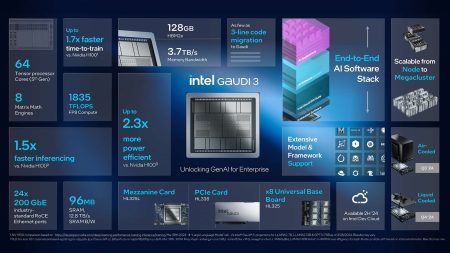
AMD moves to Zen 5
The generation of hearts Zen 5 arrives at AMD, both in the Ryzen range with Ryzen 9000 for Copilot+ PC equipped with a 50 TOPS NPU and in the “Datacenter” range with the new processors EPYC “Turin”. The latter are processors engraved in 3 nm and constitute the fifth generation of Epyc processors for servers. They will not be available before the fourth quarter of 2024 but AMD unveiled the new flagship of the “Turin” range at Computex 2024: a 192-core processor (384 Threads) ! Enough to promise a computing density never before seen.
According to AMD, a “Turin” processor in the 128-core version is 3.1 times faster than a Xeon 5 (64 cores) for traditional processing and up to 5.4 times faster for AI inferences.
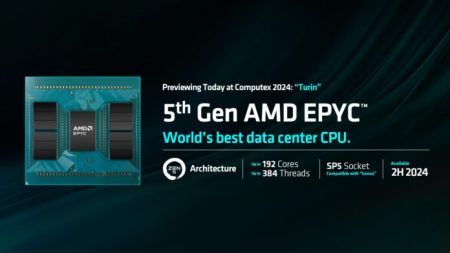
Furthermore, AMD has completed its roadmap of AI accelerator GPUs. Late last year, AMD introduced its new AMD Instinct GPUs MI300X.
This year, a new development called MI325X will appear at the end of 2024 to offer HBM3E memory to provide a bandwidth of 6 TB/sec and up to 288 GB of onboard memory. Therefore, AMD announces that the MI325X (still in CDNA 3 architecture) will be on average 1.3 times more efficient than Intel’s “H200” GPUs.
AMD also revealed the 2025 release of GPUs MI350 with CDNA 4 architecture “to take leadership in calculation and memory” and the release in 2026 of MI400 based on a brand new CDNA-Next architecture.
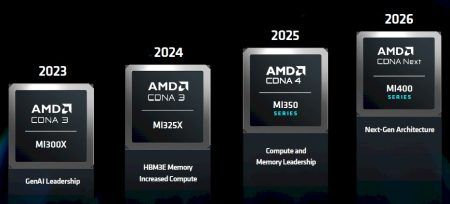
NVidia doesn’t let it count
Obviously, NVidia could not let its competitors boast without reacting. The chip designer already unveiled its very promising (but expensive) generation of GPUs at the start of the year. Blackwell » which must be delivered during the second half of 2024.
Blackwell promises 30 times more inference performance and 25 times less energy consumed than the current Hopper generation (H100, H200).

And NVidia has already announced a new generation “ Blackwell Ultra » in 2025 which will “push the limits”.
A new GPU architecture will follow in 2026, called “ Rubin », based on HBM4 memory.
At the same time, NVidia should unveil its second generation of ARM processors in 2026 to replace the “ Grace » which equip the current “CPU+GPU” GH100 and future GB200 solutions. This new generation of ARM processors will be called “ Vera “.

NVidia is also concerned about networks saturated by the mountains of data required by AI and announces a switch Spectrum Ultra X800 for 2025 (800 Gbps in Ethernet) as well as a switch NVLink 6 in 2026 reaching 3600 GBps.
READ ALSO :

Newtech
The 6 announcements that CIOs should remember from Microsoft’s “Copilot+ PC” event
READ ALSO :

Cloud
Google Next 2024: AI in security and an inaccessible processor



